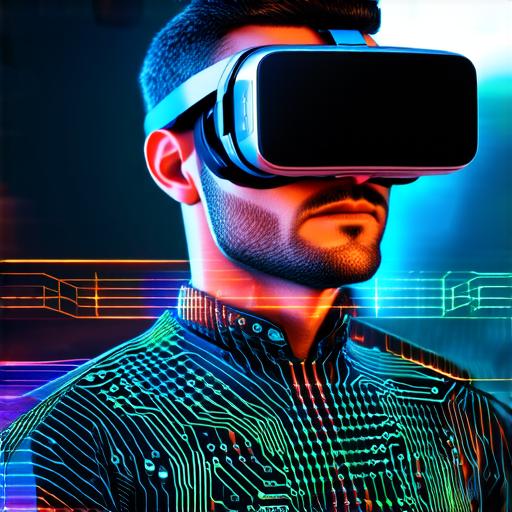
How might virtual reality and augmented reality revolutionize various industries?
Virtual reality (VR) and augmented reality (AR) are not just buzzwords. They are transformative technologies that are already reshaping various industries, including healthcare, education, entertainment, and more.
In this article, we will explore how VR and AR will revolutionize these industries in ways that have never been seen before.
Virtual Reality: A Game-Changer in Entertainment and Beyond
Virtual reality is an immersive technology that allows users to experience a computer-generated environment as if they were physically present in it. It’s not just about gaming anymore – VR has the potential to change the way we learn, work, and even travel.

1. Entertainment
The entertainment industry is already being disrupted by VR. With the ability to create highly realistic environments that transport users into different worlds, VR provides a unique opportunity for filmmakers and game developers to tell stories in ways that were previously impossible. For example, VR can be used to create interactive experiences where viewers have agency over the narrative.
2. Training and Education
Virtual reality can be used as an effective tool for training and education. It provides a safe space for learners to practice skills without any real-world risks, which can be especially useful in fields such as medicine, aviation, and military. In addition, VR can make learning more engaging by creating interactive experiences that are both immersive and memorable.
3. Travel and Tourism
Virtual reality can also revolutionize the travel industry by allowing users to explore new destinations from the comfort of their own homes. This can be particularly useful for those who may not have the resources or physical ability to travel in person, such as elderly individuals or people with disabilities. VR can also help reduce carbon emissions and other environmental impacts associated with traditional tourism.
4. Real Estate and Construction
Virtual reality can be used to create highly detailed and realistic representations of buildings and construction sites. This can be especially useful for architects, engineers, and builders who need to visualize complex designs and make accurate measurements. In addition, VR can provide a way for potential buyers to tour properties without having to physically visit them, saving time and resources.
5. Other Industries
Virtual reality has the potential to transform many other industries as well, including manufacturing, retail, and even healthcare. For example, VR can be used in manufacturing to create realistic simulations of production processes, allowing workers to practice and improve their skills in a safe environment. In retail, VR can be used to create virtual storefronts that allow customers to try on clothes or visualize furniture in their homes before making a purchase. In healthcare, VR can be used for therapy, rehabilitation, and even surgery.
Augmented Reality: A Seamless Integration into Everyday Life
Augmented reality is a technology that overlays digital information onto the real world. Unlike VR, which creates an entirely virtual environment, AR allows users to interact with both the physical and digital worlds at the same time.
1. Healthcare
Augmented reality has the potential to revolutionize healthcare by providing doctors and nurses with real-time information about patients. For example, AR can be used to display patient vital signs, medical history, and other relevant data during surgery or emergency procedures. This can improve accuracy and reduce the risk of mistakes. In addition, AR can be used to create virtual models of organs and tissues, allowing doctors to practice complex surgeries in a safe environment.
2. Education
Augmented reality can also be used in education to enhance learning experiences. For example, AR can be used to create interactive textbooks that allow students to explore concepts in a more engaging way. In addition, AR can be used to create virtual labs that allow students to conduct experiments without any physical risks. This can be particularly useful for subjects such as chemistry and biology.


